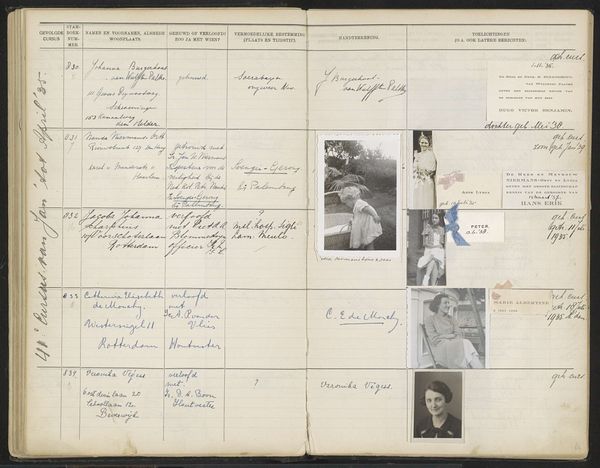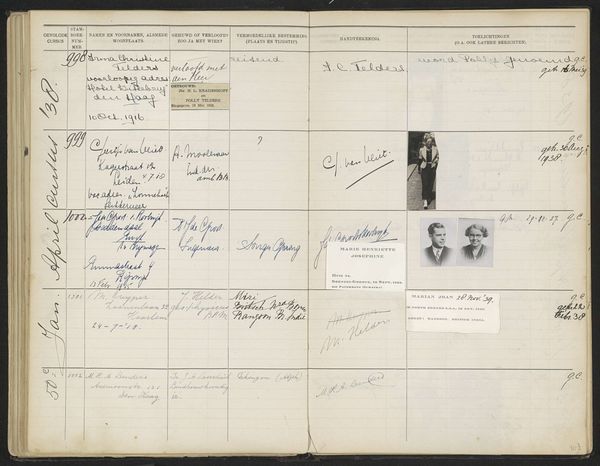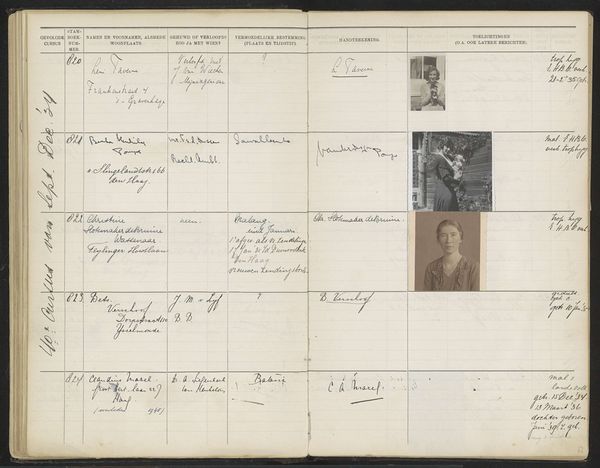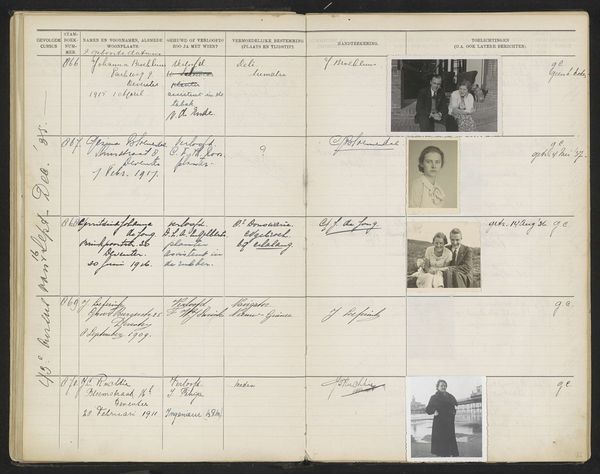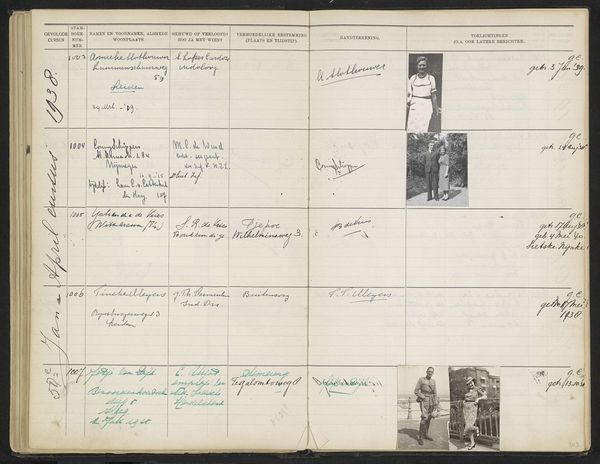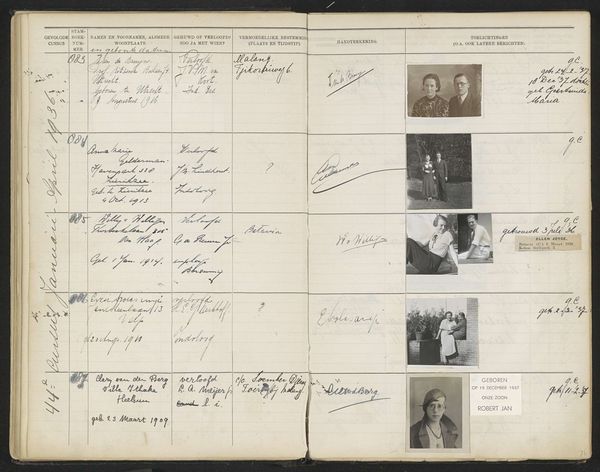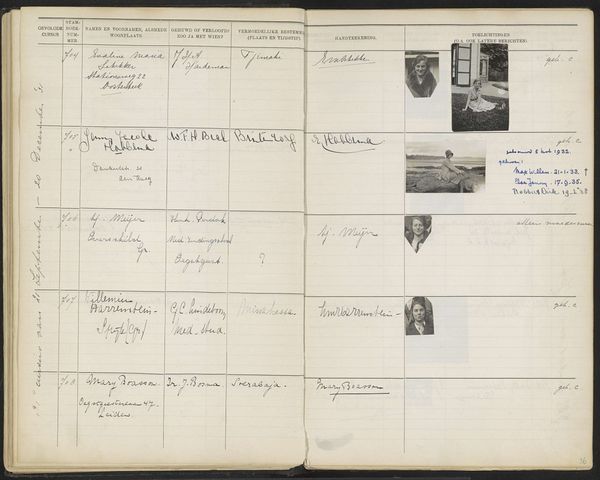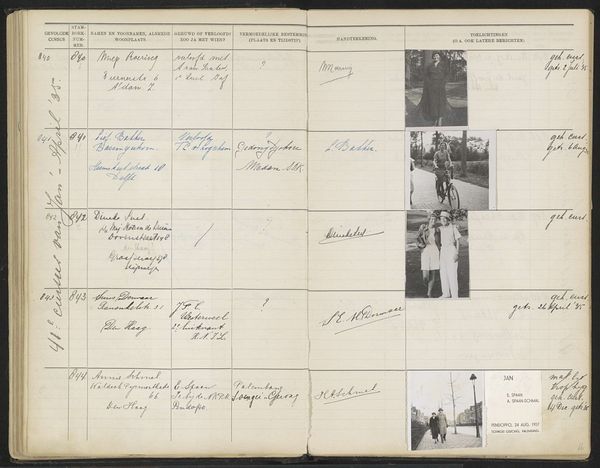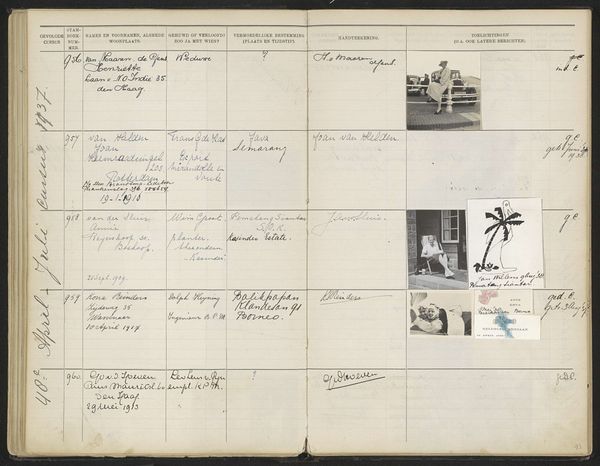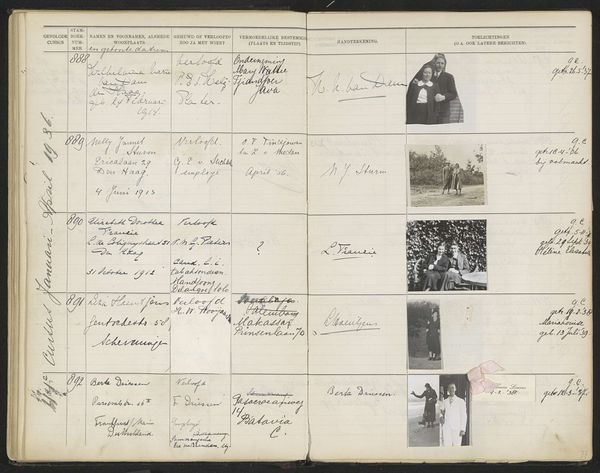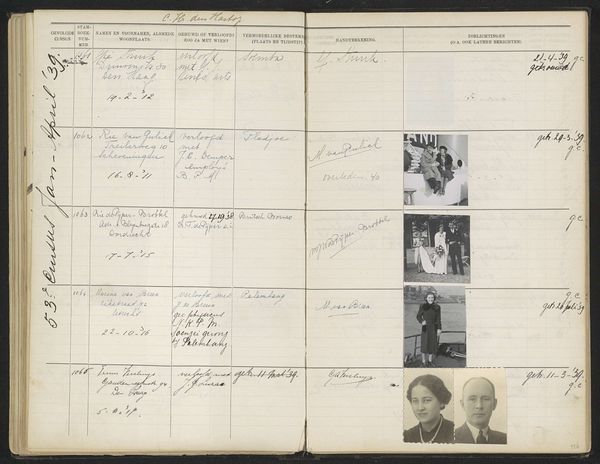
Blad 82 uit Stamboek van de leerlingen der Koloniale School voor Meisjes en Vrouwen te 's-Gravenhage deel II (1930-1949) Possibly 1936
0:00
0:00
collage, print, paper, photography
#
portrait
#
collage
# print
#
paper
#
photography
#
modernism
Dimensions: height 337 mm, width 435 mm
Copyright: Rijks Museum: Open Domain
Curator: Let’s turn our attention to "Blad 82 uit Stamboek van de leerlingen der Koloniale School voor Meisjes en Vrouwen te 's-Gravenhage deel II," likely created in 1936 by an anonymous hand. This artwork, a collage, combines photography and print on paper to create something quite unique. Editor: It feels incredibly intimate, like stumbling upon a cherished personal diary. The formal rows, the mix of photographs and hand-written notes…it's melancholy, and evokes the passage of time in a very visceral way. Curator: Absolutely. The rigid structure contrasts beautifully with the personal details within each cell, creating a sense of lives lived within a very particular framework. Consider the composition: the grid imposes order, but the handwritten script and varied imagery introduce an element of chance and individuality. Editor: It reminds me of early modernist experiments, actually. The deliberate combination of media echoes collage techniques, even if it serves a more documentary purpose here. There's also the semiotic aspect, all of these portraits function as signifiers of a specific identity, nested within the broader narrative of the school. Curator: I wonder what these women dreamed of? There is a narrative between control and freedom; it’s as if they yearned to break out of the rigid structures and leave a piece of their spirit on these pages. Editor: Do you see any stylistic echoes with that era in terms of how these are produced? It all has the potential to convey more than the simple aim to keep the memory of a generation’s past time. Curator: It almost begs you to fill in the gaps. What are they thinking and feeling and doing in this new Colonial world of work they have traveled to and returned from? It’s that element of missing information that I really connect with. Editor: Ultimately, it strikes me that the material record is itself part of the story. The marks, scuffs, and creases are not incidental: they are evidence of how those narratives get embedded within the artifact. Curator: A window into another world, certainly a bygone time. Editor: Well said.
Comments
No comments
Be the first to comment and join the conversation on the ultimate creative platform.


